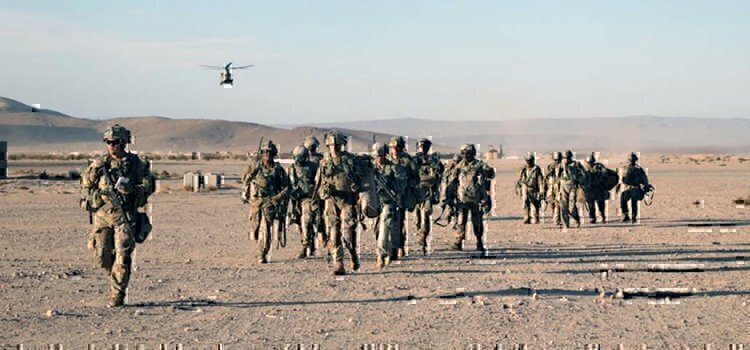Military pay raises in 2020 could be in the range of 3.1 percent, an increase of 0.5 percent over the 2.6 percent raise in 2019, according to federal economic indicators that form the basis for calculating the raise.
The first indications of what the Defense Department and White House will recommend for troops’ 2020 pay raise are expected to come March 12, 2019, in the release of the Pentagon’s overall budget request for fiscal 2020.
By statute, the major guideline for determining the 2020 military pay raise will come from the quarterly report of the U.S. Employment Cost Index (ECI) put out by the Bureau of Labor Statistics (BLS).
In a January report, BLS stated, “Wages and salaries increased 3.1 percent for the 12-month period ending in December 2018” for the private sector, according to the ECI. The 3.1 percent figure will now be a major factor in gauging the military pay rate that will go into effect in January 2020.

(U.S. Army photo by C. Todd Lopez)
According to the Pentagon’s website on military compensation, “Unless Congress and/or the president act to set a different military basic pay raise, annual military basic pay raises are linked to the increase in private-sector wages as measured by the Employment Cost Index.”
However, the ECI formula, while setting a guideline, has often served as the opening round of debate over military compensation between the White House and Congress.
Congress is not expected to take action on military pay rates for 2020 until approval of the National Defense Authorization Act in 2019.
By law, the NDAA should be enacted before the start of the next fiscal year on Oct. 1, 2019, but Congress has often missed the deadline and passed continuing resolutions to keep the military operating under the previous year’s budget.
The debate over the NDAA could be more complicated and heated this year since the Democrats took control of the House.
Here are the basic military pay raises going back to 2007, according to the Defense Department:
- January 2007: 2.2%
- April 2007: 0.5%
- January 2008: 3.5%
- January 2009: 3.9%
- January 2010: 3.4%
- January 2011: 1.4%
- January 2012: 1.6%
- January 2013: 1.7%
- January 2014: 1.0%
- January 2015: 1.0%
- January 2016: 1.3%
- January 2017: 2.1%
- January 2018: 2.4%
- January 2019: 2.6%
This article originally appeared on We Are The Mighty
This Long-Forgotten Unit was the Direct Predecessor of Delta
Differences Between Delta Force and SEAL Team 6
Airmen Prepare for Heavenly Warefare in Space Flag
Follow We Are The Mighty on Twitter
READ NEXT
(VIDEO) Submit to G.I. Jobs Today!
6 Veteran Influencers to Follow into 2019






